Our plant doctors Radko Tichavshy, Mark Moodie and Pawan Singhania weigh in on your plant problems.
Radko TIchavsky Mark Moodie Pawan Singhania
Radko Tichavsky is a Czech born Mexican Agrohomeopath. He is a co-founder and director of Instituto Comenius in Mexico and author of Handbook of Agrohomeopathy, 2007 (Spanish) and Homeopathy for Plants, 2009 (Spanish) and creator and teacher of Holohomeopathy. http://icomenius.edu.mx/index1034.php?lang=esp
Mark Moodie hosts the website Considera which provides a growing M.M and Repertory for plants and discusses resources for biodynamics and Agrohomeopathy The website allows the world community to contribute their experiences in planting.
Agrohomeopathy Course!
Radko Tichavskyi is now offering a one semester virtual course in Agrohomeopathy (in English). You can learn how to define and analyze holons and how to repertorize the specific homeopathic treatment beyond just disease or pest names. You can find out more here: www.icomenius.edu.mx
Our plant doctor, Radko Tichavsky, answers your questions about houseplants and crops for May 2016. Send your questions to [email protected] Please include your approximate location and climate.
Dear Radko Tichavsky,
I have had problem for years with grasshoppers eating all my flowers and leaves causing the death of some fruit trees and bushes. I do not want to spray chemicals. Perhaps you have a suggestion. I would be most grateful.
Karuna Tohow – Australian homeopath
Radko Tichavsky: Dear Karuna, you can apply Thuja occidentalis 100 CH alternated with Sulphur 100 CH. Understood that grasshoppers depend in their vitality and reproductive vigor directly from the amount of phytoplasmas in plants. That is, the more phytoplasmas (one species of microorganism without a cell wall with characteristic of viruses and bacteria) that are present in the sap of plants, the more intensely the grasshoppers reproduces.
The grasshopper has important functions in the holon. In fact, they are almost always the symptom of three situations: excess of toxic trace elements, imbalance of C/N equilibrium and presence of phytoplasmas in plants. Besides the grasshoppers can have 6 caecas (issuers enzymes that are similar to human liver functions) and in this regard its role in the holon is to detoxify and chelate toxic substances and accelerate the restoration of balance of nitrogen and carbon in the holon .
Expect from the application of Thuja occidentalis and Sulphur gradual results in decreasing the eggs and larvae in the soil, Concerning the adults, no immediate decrease will be noticed. Then you can apply Tarentula cubensis 12 CH, Pisaurina mira ( “Nursery web spider”) 12 CH, or Latrodectus mactans ( “Black Widow”) 12 CH; in repertorization of remedies it is always preferable to use the remedy made from the spider actually present in the particular holon. In Australia there are a big variety of spider enemies of grasshoppers and you will have no problem in choosing one of them as a source of homeopathic remedy.
It is also recommended to build shelter for spiders such as small bunches of dried grass or rice straw to promote the presence of predatory spiders of grasshoppers and restore equilibrium in the holon.
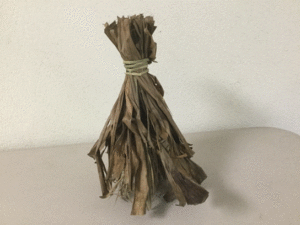
In case of emergency and only as palliative remedy for the moment, you could use Ricinus communis 6 CH or Lantana camara 6 CH, but always taking into account that the bodies of grasshoppers (although there are farmers who wish to see them dead as well and as quickly as possible) generate proteins which are significantly delaying the decomposition of organic matter in the soil and reduce the vitality of the holon. In this case you have to supplement with additional applications of tea compost and compost.
While my answer may seem much more complex and longer than the question, I would like it to be understood that grasshoppers are not a simple disease or pest to overcome, but are primarily the symptom of the patogenicity of the holon, which indicates certain imbalances to compensate for. Only in this way can we avoid recurrent infestations of grasshoppers in consecutive years.
Hello!
Thank you for doing such wonderful work! My question is about Cannabis plants with Tobacco Mosaic Virus. In the past you have recommended Nat. Sal. for strengthening the plant against this virus. Some Cannabis starts we got came down with Tobacco Mosaic Virus. Should I treat them Nat Sal. , or perhaps with a dilution of Tabacum in water, when watering the plants?
Thank you,
Miranda
Radko Tichavsky:
Hi Miranda,
The metabolic pathway of cannabis bases its antiviral strategy in two compounds: Tetrahydrocannabinol (non ubiquitous substance only present in Cannabis sp.) and Betabisabolene present in various plants. Apply Ricinus communis 12 CH which will display more intensely all plant secondary metabolites due to the presence of Shikimic acid, an important metabolic precursor. You can also apply Zingiber 12 CH and Valeriana 12 CH at intervals of two weeks to strengthen Betabisabolene production in the Cannabis sp. Remember that there is no such thing as “a universal antiviral remedy.” Between homeopathic remedies, sometimes Natrium salycicum or Salycilid acid is mentioned as having a magical antiviral remedy on all plants, but the utility of each homeopathic remedy is specific to each plant (for species, it may even be specific for each hybrid) and depends mainly on the metabolic route of each plant, degree of similarity between the remedy and plant, and integration of the plant with the rest of the holon and its members.
Mosaic virus is mainly spread through the contact with infected plants, using vectors such as whitefly or even the humans. Especially you have to be careful with the Solanaceae plants (tomato, peppers, potatoes, eggplant and certainly also the tobacco). It is not a good idea to use any part of Nicotiana tabacum in Cannabis. You have to sterilize cutting tools with alcohol and not allow smokers of tobacco have contact with Cannabis plants. A simple infected leaf fragment, hidden on clothing can quickly become a source of devastating infection. Infected plants must be burned to prevent reinfection.
Dear Radko Tichavsky,
Our first Spinach crop is turning white. Is there something we can do so the next crop grows healthier? We are in the Easter United States with moderate temperature and rainfall.
Thank you
Janice
Radko Tichavsky:
Hi Janice. The damage on the image could be a simple nutritional deficiency due to the toxic presence of some trace elements, coupled with the high pH. You can dissolve 5 ml of apple cider vinegar for every 20 L of irrigation water and apply it on the soil routinely to correct the pH. Also, apply by foliar aspersion Zincum metallicum 6 CH and Magnesia carbonica 6 CH alternated twice a week. Add 10 drops of homeopathy per liter of water and spray it with a little drool of Aloe vera or of Opuntia ficus-indica as an adjuvant.
Dear Plant Doctor
My father is a farmer and he planted a tomato crop in 2 acres. Because of the heavy sun plant grew poorly. We belong to Telangana state Medak district and Atmakur village. There is no rainfall but we have bore in our fields. We can supply 3 hours of water. Is there a remedy for our tomato crop to help it resist the heavy sun?
Thank you
Nani Hari
Radko Tichavsky: Hello Nani. The global warming is stressing plants in practically all countries just now. In fact, this will be one of the main themes of agriculture in the coming years. You can apply plant extracts that help retain water in the soil, for example, sap of Opuntia ficus-indica. Cut into small pieces the cladodes of Opuntia ficus-indica the leave them in water for three days, then separate the solid part of the plant and you will get a water with slime. Then dissolve it in water 1:20 and apply in irrigation water around your tomatoes’ soil. You can apply the same Opuntia ficus-indica at 6 CH sprayed foliar once a week when the sun goes down.
Dear Plant Doctor,
I want information about how to control the weeds in my Lemon Grass and also Citrus fruit crops using homeopathic remedies. I live in Tenali (Town), Guntur (Dist) , Andhra Pradesh (state ), India. The climate is equal months of heat and cool weather.
Thank you
Sn Lingam
Radko Tichavsky:
Dear Sn. Ligam,
A better way to control weeds is by cutting the plants and leaving them on the surface as mulching. This herb often considered harmful is really a wonderful source of nutrients for your crops. Mulching decreases blows rain on the soil and prevents the soil from becoming compacted. At the same time it helps maintain proper temperature on the soil, holding a high biodiversity of beneficial microorganisms. Observe meticulously the spontaneous plants of your crop. They are often symptomatologies of what happens in the holon and in the soil. They are also a wonderful source of homeopathic remedies for each holon.
Dear Plant Doctor
I have no suitable commercial products available in my area. What is the best way to prevent or cure soil fungus for ecological container gardening? Fungi may be due to over watering. I grow herbs, vegetables, medicinal plants, Morning Glory, Papyrus and Fucus. The plants are also attacked by mealy bugs, spider mites and other spiders and green/white fly. I have 20 containers and 4 meters of open cemented squares filled with soil. Thank you so much for your help with this, as my gardening as a cancer sufferer is my greatest pleasure and, I might add, agony!
Brigitte – living in the South of Morocco
Radko Tichavsky:
Dear Brigitte,
The main key of success in gardening is the compost quality. This assures 90% of success, since a vitalized mature soil produces plants resistant to pests and diseases.It is interesting that the most effective remedy to limit a fungus, is another fungus! This quite agrees with what Samuel Hahnemann summarized in his maxim: Simila similibus curantibur. Then vitalized soil contains a great variety and quantity of beneficial and pathogenic fungi in balance. Among the wood-rotting fungi (xylophagous ones) we can find the most potent antifungal remedies. We can mention Ganoderma, Phelinus, Schyzophyllum, Trametes, Polyporus for example. Their fruits can be found in the broken, dead trunks, shaped in the form of disks attached to the trunk.
It is interesting to know that cancer in humans is also frequently associated with the presence of certain types of fungi in the body. In this sense the agriculture is not only the art of mastering nature and pretending to be the president, director and head or something similar to nature, but rather to understand that we are part of the holon, a very small and insignificant part of this great symphony of life, and compared with the other organisms, perhaps we are the most disconnected and destructive part of the holon. We have more difficulty understanding why we came into this world.
Our health is intimately dependent and interconnected with the vitality of the holon, and many events in the holon depend not only on what we do and not do in the containers or pots, what we let and remove from the holon, but also what we feel, and what we think of ourselves, each other and our holon. In this sense, agriculture is not only a physical but also a highly spiritual art.
Hello Radko Tichavsky,
I am located LD3 9NB mid Powys Wales UK. Soil has been moved here by the council some years ago and Japanese Knotwood is a problem. How may I deal with it homeopathically?
Also is there anything to keep briars at bay? I have cleared an area and pulled put as many crowns as possible.
Thank you
Sandra Evans
Radko Tichavsky:
Hi Sandra.
As you noticed, I usually advise how to improve the health of plants, and I am always looking to find their use and importance, so I can I try to calm the aggressive and predatory instinct of man. Man has so far not been able to create one new organism but due to his activities, hundreds of thousands of species of plants and organisms disappeared forever. We must understand the complex interrelations in holons (including humans), even when it with invasive species such as is the specific case of Japanese Knotwood (Fallopia japonica) introduced by humans by “tourism of species”.
It is interesting to know that the knotweeds of this plant can be eaten; it tastes very similar to rhubarb, and have also a wide range of biological and pharmacological activities, including resistance to diseases, anti-oxidative, anti-aging etc., This plant also has many useful properties for organic agriculture (in its application as microdoses or homeopathicy remedy) and is an excellent insect repellent and fungicide and UV filter for plants. This plant contains up to 2800 ppm of phosphorus, 22 000 ppm of potassium, 2600 ppm sulfur, and 12 000 ppm of calcium. So from this plant can be prepared top quality compost. When harvesting the plant before it produces seeds, it decreases the possibility of extending the plant invasively.
To control the Fallopia japonica with homeopathic remedies we can use Acacia farnesiana, Aloe vera and Amaranthus. Used in low potency and foliarly applied, it intervenes in the metabolic pathway of Japanese knotweed phenylalamine with antagonistic tyroxine involved in metabolism of Acacia, Aloe and Amaranthus.
As a gift for your concern for invasive species I attach images of the holon that you care about.
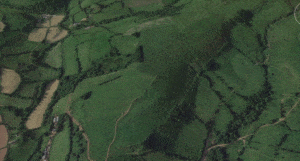

The white lines show limits of holons in the landscape. Where there are no lines these are low vitality areas.

This is the same image expressed quantitatively in colors – the vitality of the different areas (yellow indicates great vitality, red medium vitality, blue low vitality and black means a big disturbance or areas of lack vitality.
Dear Sir,
I have a cluster fig tree in my garden called Ficus racemosa. It is affected by disease on the leaves and by mites. I gave one doss of Thuja 6x but see find any result. I am sending you photos of leaves for reference.
I live in a village 25 Km towards North of the city Saharanpur, India. Climate conditions are 21-40C° temperature with rainfall 990.5mm. There is open land around the cluster fig tree. There is only one Mango tree at the distance of 20-25 meters.
Thank you
Eliya
Radko Tichavsky:
Dear Eliya,
It looks like Josephiella sp. (Hymenoptera), or maybe Josephiella malabarensis infestation. You can apply Calcarea carbonica 12 CH alternated with Ruta graveolens 6 CH once a week with sap of Opuntia ficus-indica as adjuvant.
Dear Mr. Tichavsky,
My Christmas Cactus is big and healthy and I have fed it a natural plant food. I have had it about 10 years. For the last 3 years it has not been flowering all over in full bloom. It will flower during the season, but there are only a few blossoms here and there on it.
Thank you
Debra Labelle
Radko Tichavsky:
Dear Debra,
Schlumbergera sp. (Chrismas cactus) requires four things to bloom:
- No watering, so the plant will enter in dormancy. Iimportant to induce blooming
- 12-14 hours daily of darkness
- Cold temperature (12-15 grade of Celsius )
- To apply just one time Phosphorus 200 CH
Dear Plant Doctor,
Last year I read that Asian Lily Beetles would leave Asian Lilies alone if Turtlehead, (Chelone Glabra) was planted next to them so I sprayed my Lilies a couple of times with 30CH Chelone Glabra and the Lilies were fine for the rest of the summer. This summer one dose knocked out the beetles for a week so I applied a second but one the plant has not responded very well. I thought that I should try a 200CH. I have searched the internet for information about using potentized Chelone Glabra but only found the one article about companion planting so I thought I should say something as I may be the only person who has tried homeopathic Chelone Glabra for Asian Lily beetles on Asian Lilies. Are you familiar with this remedy?
Rosalind Walton
Radko Tichavsky:
Hi Rosalind,
The homeopathy remedy Chelone glabra is used as a tonic for Asian Lilies and also as a vermifuge and insectífuge. In this case the active metabolites are mostly Aucubin and Catalpol. Both can be found also in Plantago ovata. It is important to understand that however wonderful is any homeopathic remedy, if applied consistently (repetitive and in predictable manner) the holon detects it, adapts with epigenetic memory, and this remedy gradually loses its efficiency. Then it would be a good idea to alternate Chelone glabra with Plantago ovata to avoid this effect in your holon. I congratulate you on your contribution to new homeopathy remedies in plants and I encourage you to keep looking and sharing new remedies at Hpathy.com.

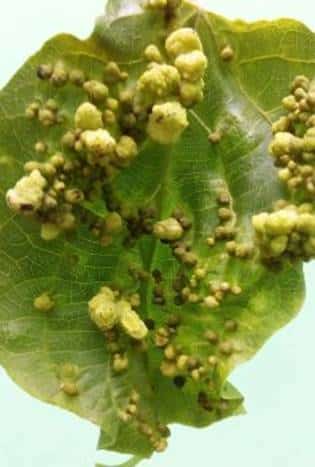



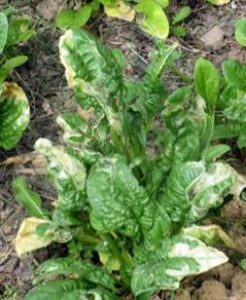
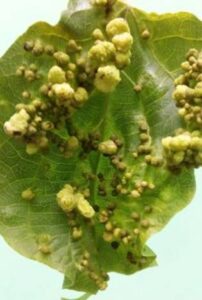
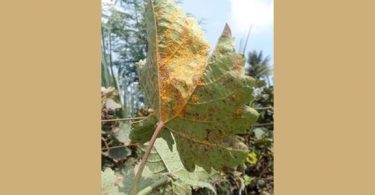


I love this column. There is nothing like it anywhere else. Thank you for sharing your knowledge.